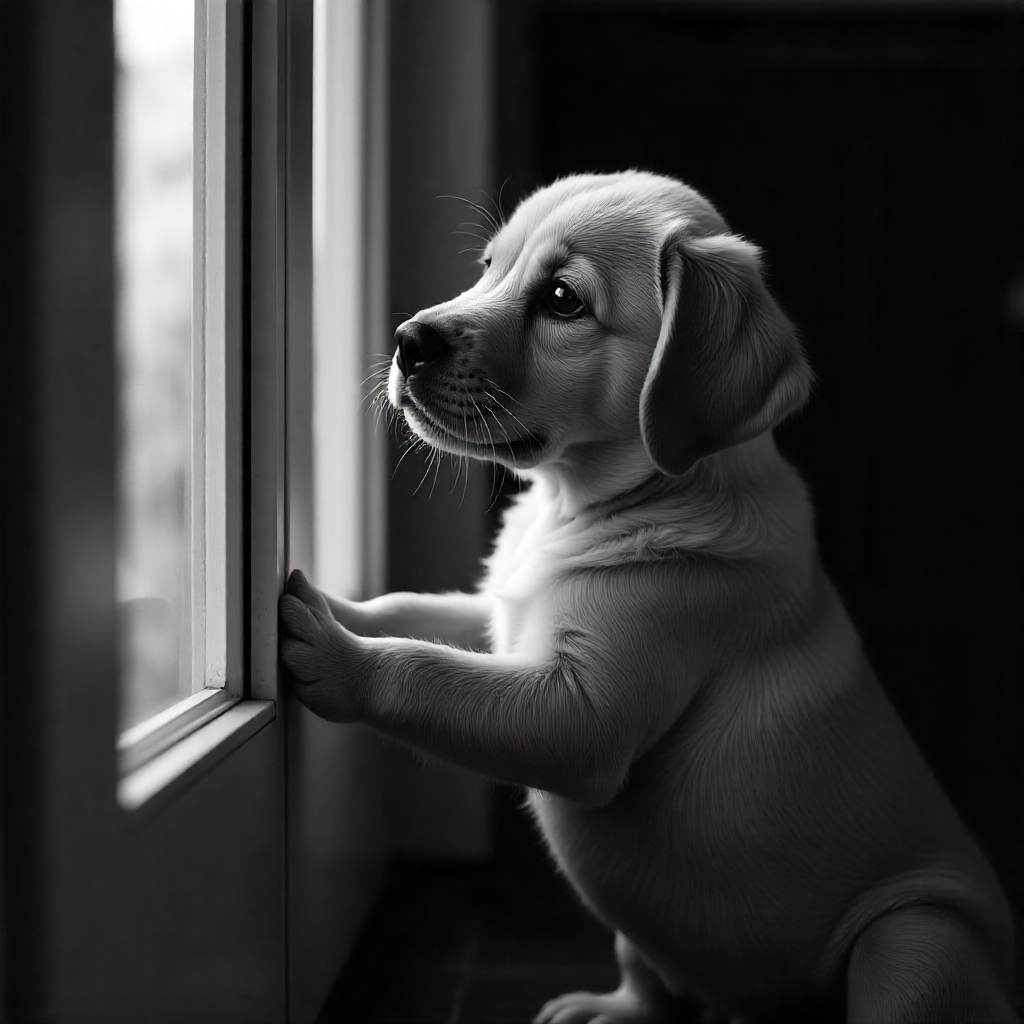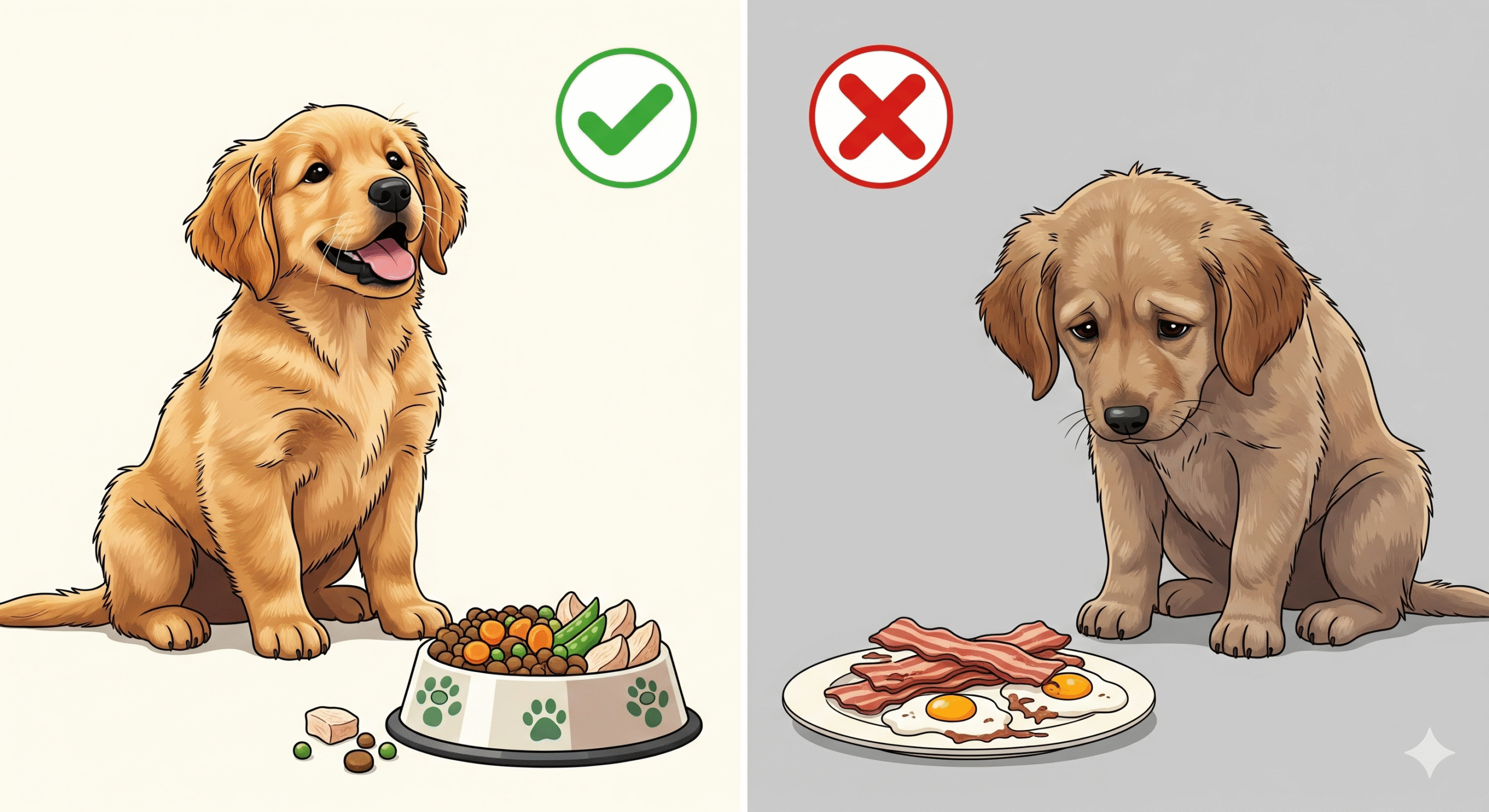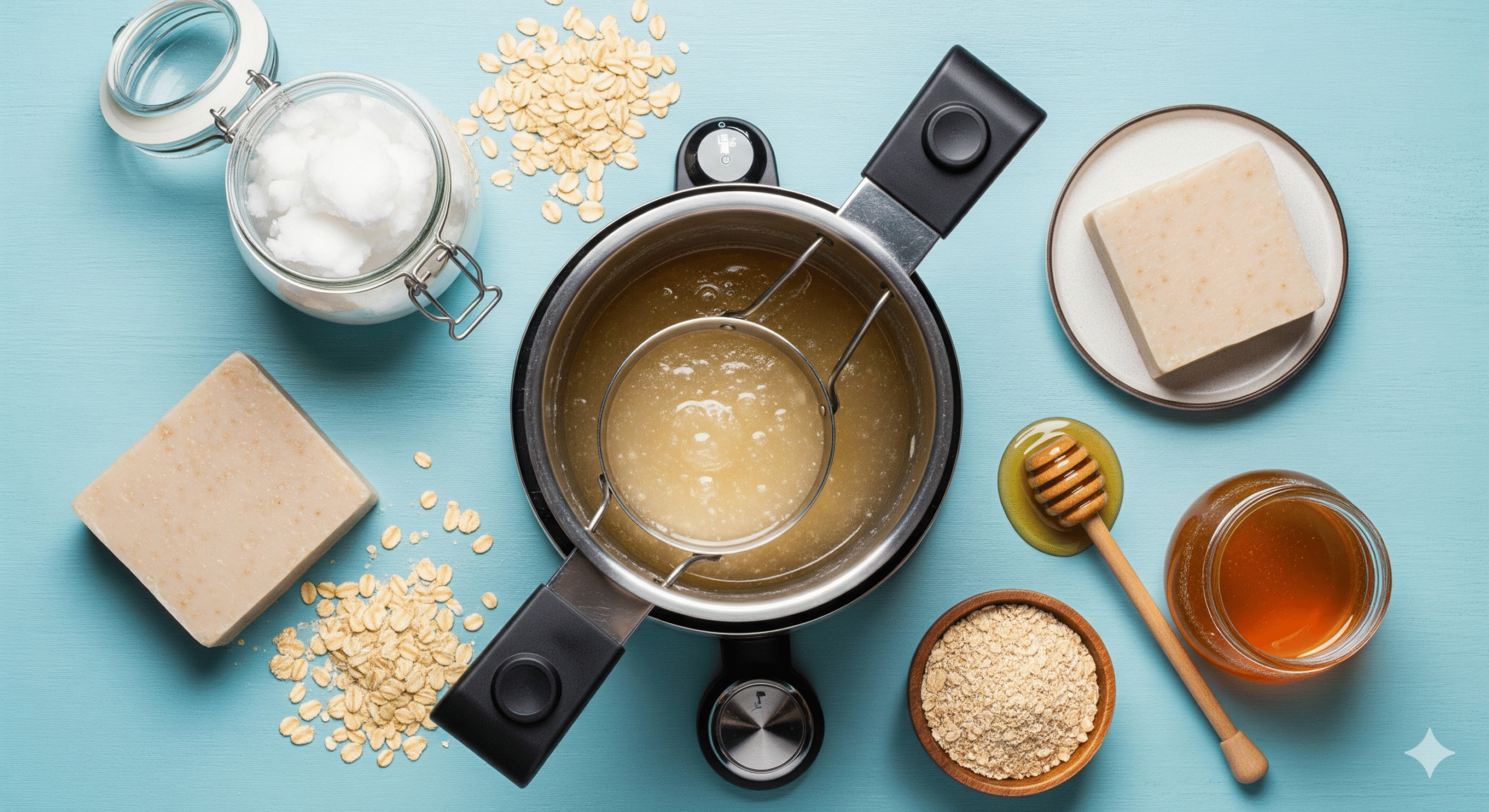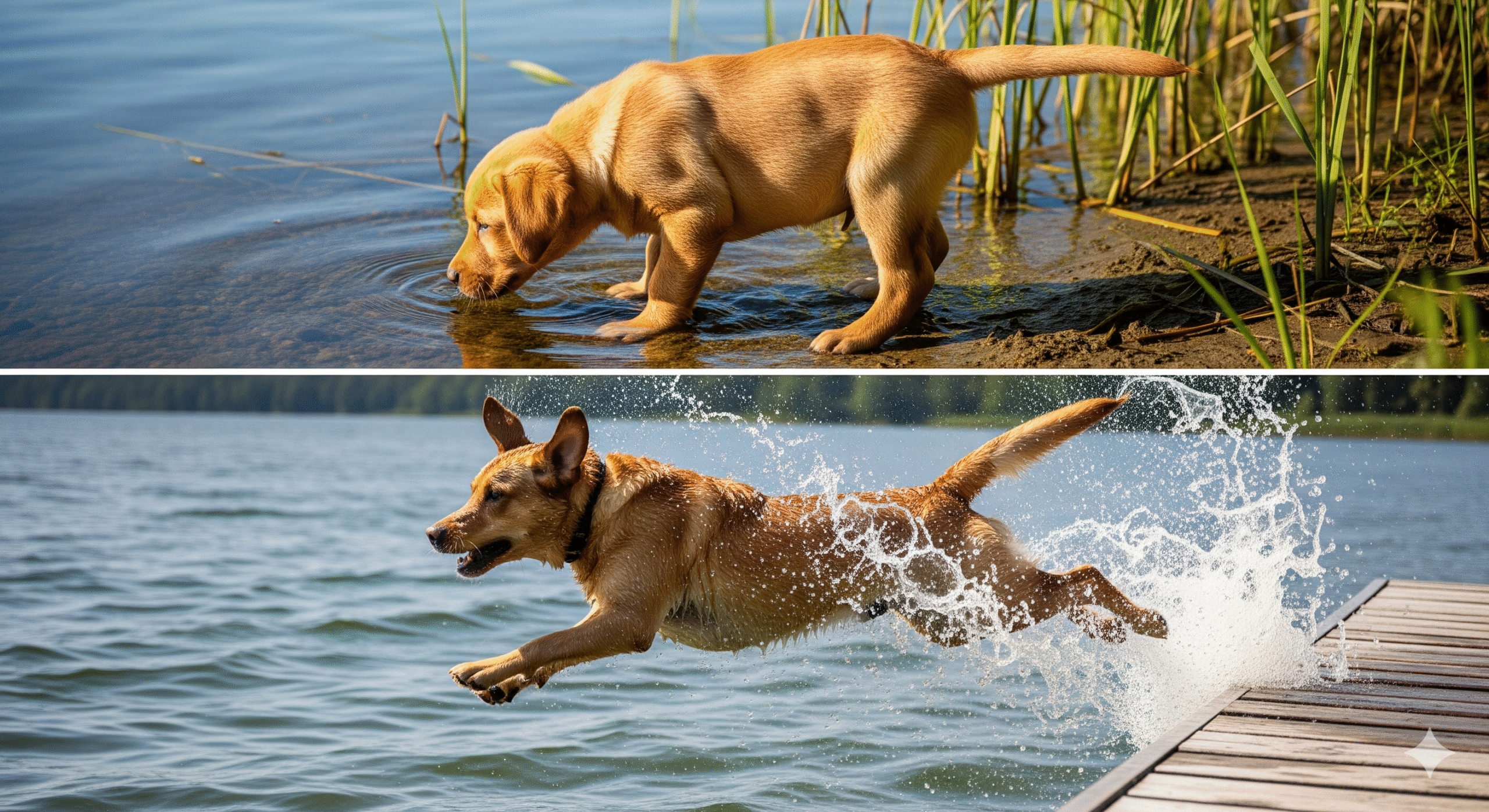That heart-wrenching sound of your puppy crying as you close the door. The sight of chewed-up shoes, scratched doorframes, or a puddle on the floor when you return home. If this scene is familiar, your furry friend might be struggling with puppy separation anxiety. This common but challenging behavior stems from a puppy’s fear of being isolated from their social group. The good news? It’s manageable with patience, understanding, and the right approach. This ultimate guide will help you identify the signs and provide you with proven dog anxiety training techniques to help your pup feel safe, secure, and confident when home alone.
What is Puppy Separation Anxiety? 🤔
Puppy separation anxiety is more than just a little whining. It’s a state of intense panic and distress that a dog experiences when separated from the person or people they are most attached to. It’s a profound fear of isolation. For a social animal like a dog, being left alone goes against their core instincts, which tell them that safety is in numbers. It’s crucial to understand that this is not a sign of spite or disobedience; it is a genuine emotional crisis for your puppy.
How to Tell if It’s Anxiety: Key Signs and Symptoms 🔍
Not every mishap is a sign of anxiety. A bored puppy might chew, and a poorly potty-trained puppy will have accidents. True anxiety is often displayed through a combination of behaviors that escalate the longer you are gone.
Destructive Behaviors
This isn’t just casual chewing. Anxious destruction is often focused on points of entry and exit (doors, windows) or objects that carry your scent (shoes, pillows, remote controls). The damage is usually significant and seems frantic.
- Scratching or digging at doors, windows, or floors.
- Chewing baseboards, door frames, or crates.
- Attempts to escape from a crate or confined area, which can sometimes lead to self-injury.
Vocalization: More Than Just a Whimper
The sound of a puppy with anxiety is distinct. It’s not a few barks of protest but sustained, distressed vocalization.
- Excessive barking and crying that lasts for the entire duration of your absence.
- Howling that sounds mournful and distressed.
Potty Accidents When Left Alone
Even a perfectly potty-trained puppy may urinate or defecate in the house when experiencing extreme anxiety. This is an involuntary reaction to sheer panic, not a lack of training. You’ll often find these accidents in prominent places or right by the door.
Other Subtle Signs
- Pacing: Following a fixed path or pattern in a repetitive way.
- Drooling and Panting: Excessive salivation or panting that isn’t related to heat or exercise, often found in puddles on the floor.
- Coprophagia: Eating their own feces, which can be a stress-related behavior.
What Causes Separation Anxiety in Puppies? 🧬
Understanding the root cause can help you address it with empathy. Common triggers include:
- A Change in Routine: Puppies thrive on predictability. A sudden shift in your schedule (like returning to the office) can be a major trigger.
- Traumatic Early Life Experiences: Puppies from shelters or who were abandoned may be more predisposed to anxiety.
- Sudden Loss of a Family Member: This could be a human or another pet that the puppy was bonded with.
- Being Left Alone for the First Time: A puppy who has never been truly alone may not know how to cope.
- Genetics: Some breeds and individual dogs are simply more prone to anxiety than others.
Training Fixes: Building Confidence and Independence 🏆
The goal of training is not to simply stop the symptoms but to address the underlying emotion: fear. We must teach our puppies that being alone is safe, predictable, and even rewarding.
1. Create a Safe and Positive Space
For many puppies, a crate becomes their safe den. However, you must crate train a puppy with anxiety correctly. Forcefully confining an anxious puppy can make the problem drastically worse.
- Make it a Haven: Feed meals in the crate, hide high-value treats inside, and provide a special, safe chew toy (like a Kong stuffed with frozen peanut butter or yogurt) that they only get when in the crate.
- Never use the crate as punishment. It must always be associated with positive things.
2. Master the Art of Boring Departures and Arrivals 🥱
The most common mistake is making a huge fuss when you leave or return. This dramatically increases the emotional peaks and valleys for your puppy.
- When Leaving: Ignore your puppy for the 10-15 minutes before you depart. Pick up your keys, put on your shoes, and walk out the door without saying a word like “It’s okay, I’ll be back!” or “Be a good boy!”.
- When Returning: Do not greet your puppy excitedly. Walk in calmly, put your things away, and only acknowledge them once they have completely calmed down. This teaches them that comings and goings are no big deal.
3. Practice Gradual Desensitization: The “Alone” Training Protocol
This is the gold standard for treating separation anxiety. You must slowly and systematically get your puppy used to being alone, starting with tiny, manageable increments.
- Step 1: Perform your “leaving” cues (putting on shoes, jingling keys) and then just sit back down on the couch. Do not leave.
- Step 2: Walk to the door, open it, and then close it and come back.
- Step 3: Step outside for one single second, then immediately return.
- Step 4: Gradually increase the time you are out of sight: 5 seconds, 10 seconds, 30 seconds, 1 minute.
Pro Tip: The key is to return before your puppy shows any signs of anxiety. If they start to whine, you’ve pushed them too far, too fast. Go back to a shorter duration.
4. Provide Mental and Physical Stimulation 🎾
A tired puppy is a calm puppy. Ensure your pup gets plenty of exercise before you need to leave them alone. A brisk walk or a vigorous play session helps burn off nervous energy. Mental stimulation is just as important:
- Puzzle toys and snuffle mats that make them work for food.
- Training sessions to practice basic obedience, which builds confidence.
- A special “alone time” toy like a stuffed Kong that keeps them busy and creates a positive association with your departure.
5. Explore Calming Aids and Supplements 💊
While not a substitute for training, some tools can take the edge off and help your puppy be more receptive to behavior modification.
- Adaptil Diffusers: These plug into a wall outlet and release a synthetic copy of the “appeasing pheromone” a mother dog emits to calm her puppies.
- Calming Supplements: Ingredients like L-Theanine, L-Tryptophan, and melatonin can promote relaxation. Always consult your veterinarian before giving your puppy any new supplement.
- Calming Music: Playlists and YouTube channels specifically designed to calm a scared puppy with simple, soothing classical music can mask outside noises and provide comfort.
What NOT to Do: Common Mistakes to Avoid ❌
- Punishment: Never, ever punish your puppy for destructive behavior or accidents that happened while you were gone. They cannot connect the punishment with the past action; they will only learn to fear your return.
- Getting Another Pet: This is a roll of the dice. The new pet might become a crutch, or your anxious puppy might just teach the new one their anxious behaviors.
- Giving in to the Crying: If you return to the room when they are crying, you have just rewarded the crying. You must wait for a moment of silence.
When to Seek Professional Help 🩺
If your efforts aren’t showing progress after a few weeks, or if your puppy’s behavior is severe (especially if they are causing self-harm or extreme destruction), it’s time to call in the experts.
- Your Veterinarian: First, rule out any medical issues that could be causing the behavior (e.g., urinary tract infection causing accidents).
- A Certified Professional Dog Trainer (CPDT) or Veterinary Behaviorist: These professionals can create a customized behavior modification plan for your dog’s specific needs. They are an invaluable resource.
Title Page Separator Site title
Patience is the Path to Peace ✨
Overcoming puppy separation anxiety is a journey that requires immense consistency, empathy, and patience. There will be setbacks, but every small success is a step toward a more confident and independent dog. By understanding the signs and implementing these training fixes, you are not just stopping bad behavior—you are building your puppy’s trust and giving them the incredible gift of security.
Understanding Puppy Whining
Puppies communicate their needs, fears, and frustrations primarily through vocalizations. While some barking is to be expected, constant whining can be particularly stressful for owners. It’s crucial to determine whether your pup is whining because they need to go potty, are feeling lonely, or are simply testing boundaries. For a deep dive into deciphering and addressing this behavior, our guide on Puppy Whining: Causes & How to Stop offers a comprehensive step-by-step plan. Ignoring attention-seeking whining while responding to genuine needs is a delicate balance every owner must learn.
Learn more: Puppy Whining Guide





